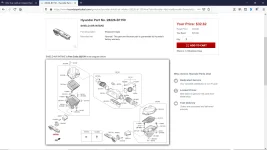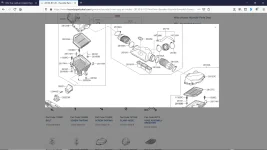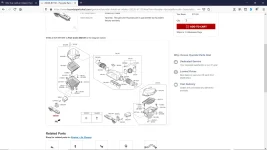carguy75
Registered Member
- Joined
- Jun 23, 2018
- Messages
- 3,067
- Reaction score
- 1,640
- Points
- 113
- Location
- Atlanta, Georgia
- Genesis Model Year
- 2015
- Genesis Model Type
- 2G Genesis Sedan (2015-2016)
I will post as many pics as I can. Hopefully there will be enough space to actually do the set-up. I did not remove the air-box housing to take a good look, but I will before I do any other part of this project. I also hope that the 5.0 engine fuel injectors and ECU can compensate for the extra airflow by adding fuel to keep the air/fuel ratio optimal.Please post lots of pics or getting the stock boxes and ducts out and what space is left when its all removed. That would be very helpful. Thanks.
I say this because horsepower gains with better flowing intake systems on stock engine usually depends on the fuel injector flow rate and the ECU ability to adjust air/fuel ratio. Some cars actually lose power when the engine runs too lean due to have too much cooler air flow if the fuel injectors can not keep up with the airflow going into the engine. Usually a engine will throw a lean code and/or the engine will go into limp mode/retard timing to compensate. Hence why some performance air-filters actually make more power than when the engine is running without a filter(or air-box attached) in some cases like tested on some YouTube videos. The engine without the filter is probably pulling too much air for the system to account for. So, there is a point where too much air can be bad for an engine if the system cannot utilize it. However, most engines airflow are limited by the stock throttle body size ; so too much air flow such not be an factor, unless the ECU have a certain CFM range that triggers a fail-safe if the measured intake CFM exceeds it.
Hopefully,the 5.0 fuel injectors can keep up and the stock ECU will adapt.


















